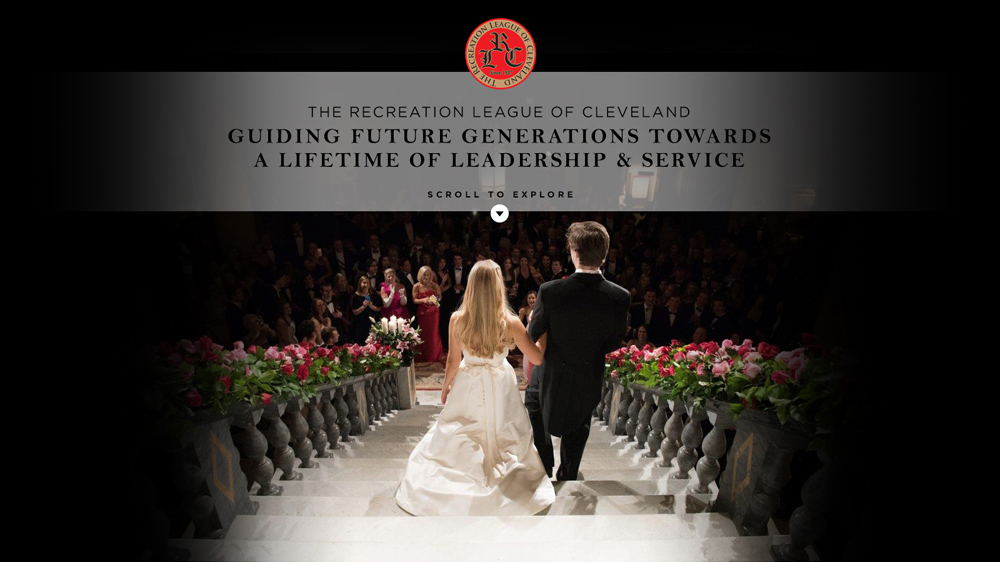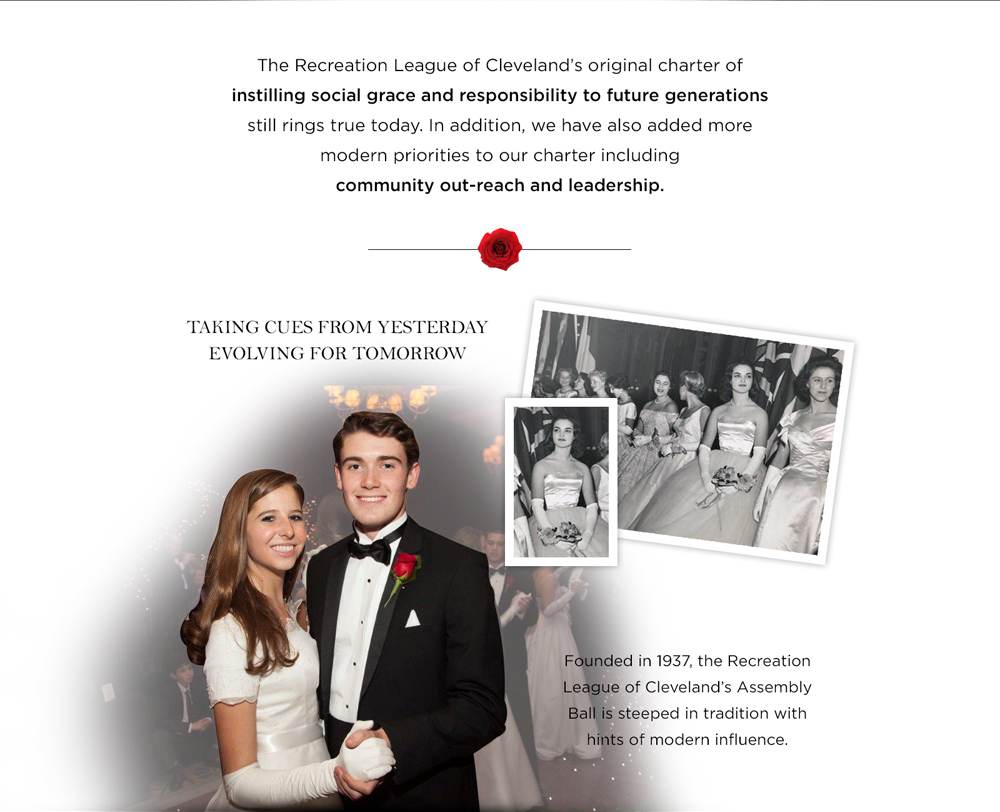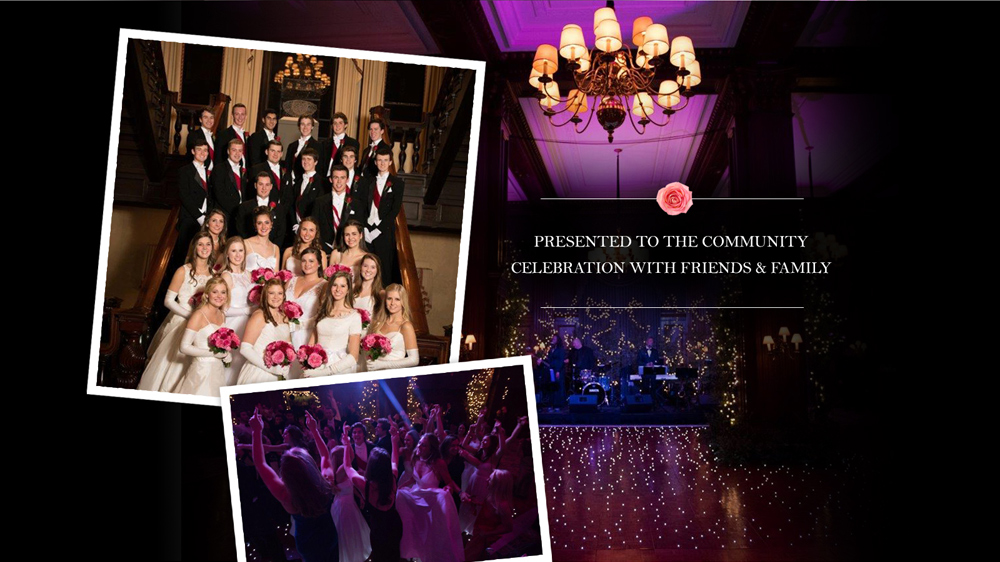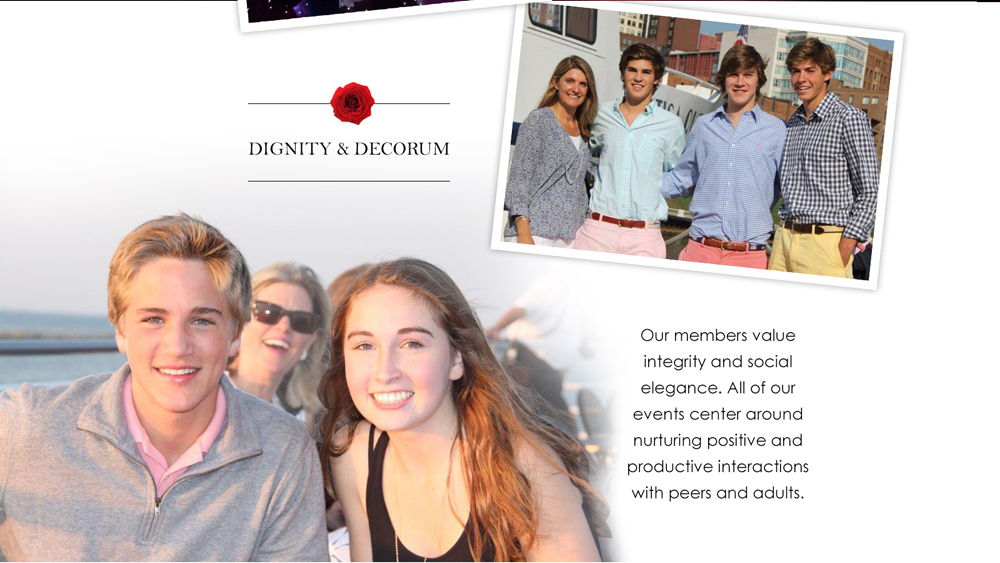




HISTORY OF THE RECREATION LEAGUE OF CLEVELAND
The Assembly Ball was first held in 1937. In a Plain Dealer article published just before the second ball in 1938, the head bartender at The Union Club was said to be preparing for the night by “having on hand 500 bottles of his best imported champagne.” The set up of the Ball was very different than it is now. Both girls and boys were listed on the invitation; often almost 90 kids were named and referred to as hosts and hostesses. The girls were freshmen in college, while the boys were sophomores. In 1939, the reception before the ball, held from 10:00-11:00 pm, included an hour-long receiving line for the hostesses, and the guests were led through the line by the hosts. If a Recreation League member’s child chose not to participate in the Assembly Ball as a host or hostess, they could never be invited as a guest to the ball. The tradition of the debutantes wearing white dresses didn’t start until a few years after the Ball began, and early newspaper articles are full of descriptions of dresses in vibrant colors.
Dinner arrangements also were different. The dinner at The Union Club was served only to the young people, the hosts and hostess, who were allowed one dinner partner each. Dinner was strictly limited to 150 people total (remember there could be over 80 hosts and hostesses) and out of town guests could be included until the limit was reached. While there was a dinner for the Rec. League Executive Committee (the precursor of today’s Board) in one of the parlors at the Club, parents of hosts and hostess were not invited for dinner. They and their guests arrived for the Reception and the Grand March, which started as late as 10 p.m., but got earlier as the years passed.
The Assembly Ball must have really been something to see. Each host and hostess could invite up to five (in some years six) guests to the ball. All former hosts and hostess from the preceding Balls who were still unmarried were automatically invited and didn’t count against the five guest limit. The requirement that a guest be of college-age was already in place from the earliest balls. Older guests did not stay for the Ball but left after the reception. In 1951, there were 70 hosts and hostesses, 500 people were invited to the Reception, and 825 were invited to the dance. The actual attendance was 206 girls at the ball and 466 boys! Hosts from preceding years were invited to serve as Ushers at the Ball and served very specific hour long shifts under the direction of captains and head ushers. Their major responsibility seems to have been to make sure every hostess was dancing every dance. At this Ball, the dancing to two different bands lasted until 4 a.m.
The debutantes were not presented by their fathers until 1960. Before that the Grand March was performed by the hosts and hostesses, they processed in pairs down the side staircases of The Union Club, joining at the main staircase to have two girls in the center with two boys on the outside, to the song “Getting to Know You.”
The Assembly Ball was not held for two years during the Second World War. In 1946 the Rec. League hosted the Victory Assembly Ball with hosts and hostess who did not have a chance to participate because the ball was canceled in ‘44 and ‘45. Over 102 host and hostess participated, including three married couples. One week later, the 1946 Assembly Ball was held.
In 1960, the Assembly Ball took on a shape that is more like the current one with the fathers presenting the debs as they descend the stairs together. With the large classes of girls, debs were only allowed four guests of each sex in addition to their escorts. Over the years the Grand March was moved earlier into the evening. Classes of debs were so large in the ‘60s and ‘70s that the receiving line was held in two different rooms of The Union Club. In 1967, the Grand March was at 7 p.m., there was a parents’ dinner at the Cleve. Athletic Club, and the Ball started at 10:30. In 1970, bachelor parents, deb parents and deb parents’ guests ate at the Statler Hotel at 9:00 p.m. Also that year, the Ladies Dining Room featured a psychedelic light show, complete with black lights. Ushers were not announced by the master of ceremonies until 1985.
The Recreation League of Cleveland was formed by ladies concerned about passing on modes of good behavior and values for the younger generation. They held meetings where speakers from around the country would talk about child rearing issues. They worked closely with the directors of the private schools in selecting programs. For example, in the 1950’s, Dr. Spock spoke on disciplining children. In 1991 the Spring Cocktail Party replaced the Annual luncheon meeting and its educational speaker.
Before 1976, young ladies could join the Rec. League in 8th grade, while young men joined in 9th. In 1976, the party groups were changed to have both 8th grade girls and boys in one group, 9th and 10th grade girls and boys in another, and 11th and 12th grade girls and boys in a third. Young men who were freshmen in college were invited to participate in the Assembly Ball.
The parties that the League has hosted have also changed over time. Through the 50’s, the Intown Club and the Chagrin Valley Hunt Club were popular places for dances, which were held for each party group during the Christmas season. In these early years, the party planners spent an incredible amount of time arranging ushers for grade level dances whose responsibility was to make sure that dance cards were filled and complicated dancing programs were completed. For example, everyone had a dinner partner, and the first dance was with that person, the second dance with the person on the other side, the third dance was with another person at the table. At the party the ushers were responsible to make sure that every girl’s dance card was completed. Mrs. Meacham Hitchcock’s notes from1969 state “the boys tried, but the program filling was chaotic. It resembled a hog calling contest, and some of the boys resorted to their usual churlish ways during the dance itself.” The dances in 1957 junior dance included the hokey pokey, a Charleston contest, the bunny hop, and a dance where 3 dolls were passed around by cutting in.
By the 1970’s, these were replaced by disco parties at the Mad Hatter and Playhouse Square and events at Fagans and Pickle Bills in the Flat. Additionally, the board planned events at Gates Mills Community Center, The Front Row Theater, Whirly Ball, Red Raider Camp, Peabody’s Café, Musicarnival and the Chagrin Roller Rink. Bus transportation was offered for some events and guests were allowed for a small fee. Based on the response cards and the party reports for these events, parents were not included in the parties. From conversations with Nancy Cockley, who was President in the mid-90’s, parents were invited to the parties because it was felt that the kids behaved better and actually showed up at the parties when their parents were in attendance.
Now we are in the 21st century, and The Recreation League of Cleveland continues to prosper and grow. There are over 200 family memberships and nearly as many associate members. At a time where schedules are so busy and hectic, it is nice to keep tradition alive and well and allocate family time through social events and community services.
Event photography courtesy of newimagephotography.com